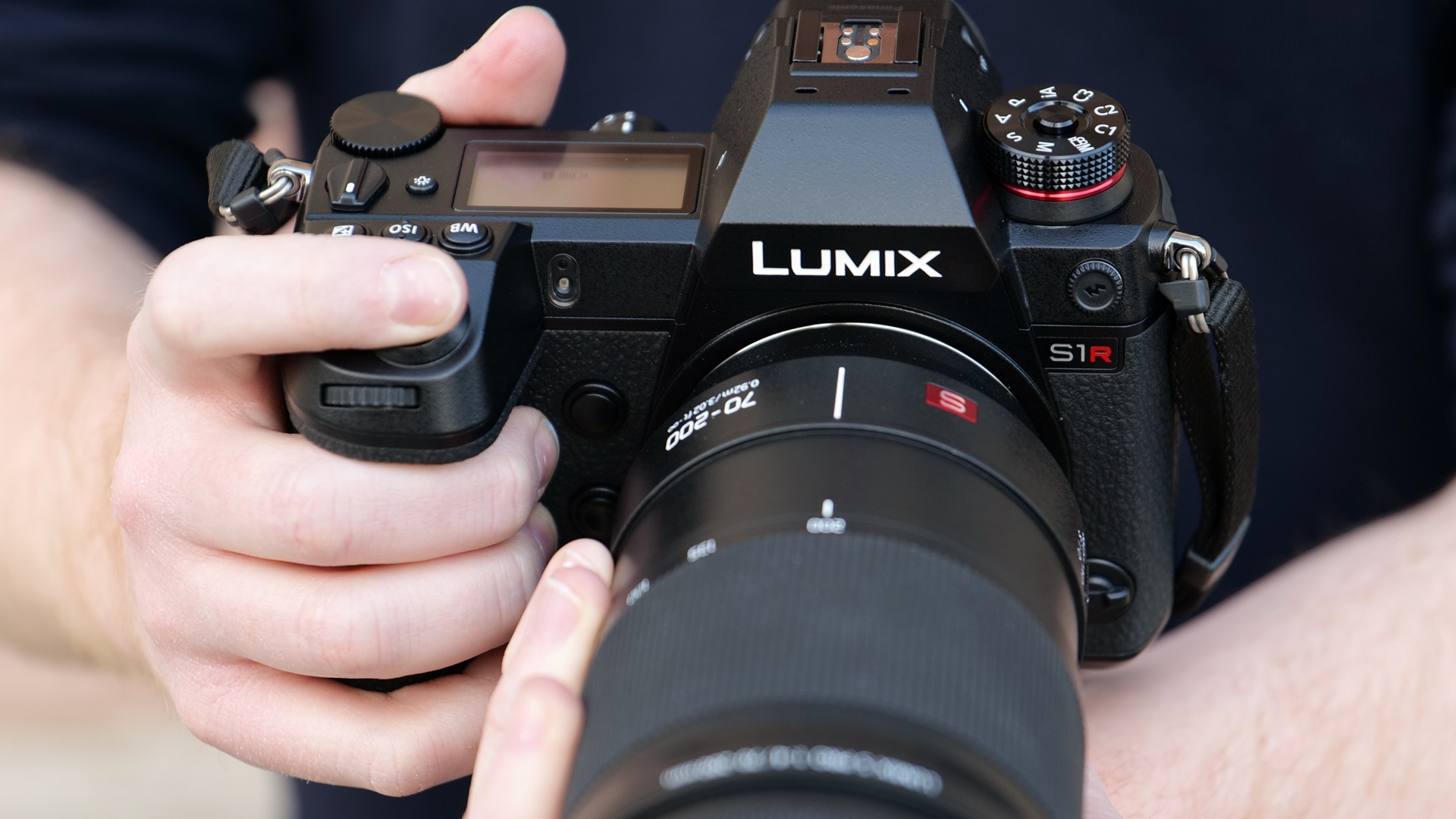Why you can trust TechRadar
Performance
- Superb electronic viewfinder
- LCD is responsive but only extends so far
- Deep buffer depth considering sensor resolution
We were hugely impressed by the quality of the electronic viewfinder when we got to try it out on a pre-production sample of the S1R, and it looks just as fine on the sample we've used for this review.
Put simply, it's the best electronic viewfinder in any camera of its kind right now. Its high resolution of 5.76 million dots – around two million higher than the panels inside competing mirrorless cameras right now – is impressive in itself, but it's the fact that this is combined with a bright OLED panel, a very respectable 0.78x magnification, and a refresh rate that can be set to 120fps that makes it the most lifelike electronic viewfinder we've had the pleasure to use yet.
You can easily see the entirety of the frame, and the exposure information at the bottom and top of the finder, at the same time, and the fact that you can quickly knock magnification down to 0.74x and 0.7x through a button to its side will come as some relief to those wearing glasses, who may not be able to get as close to the eyepiece as others.
While its 0.78x magnification isn't quite as high as the 0.8x on the Nikon Z6 and Z7, a side-by-side comparison between the S1R and the Z7 doesn't show any noticeable difference between the two. The S1R's finder also shows better contrast and crisper details, and doesn't display aliasing artifacts as readily. The very effective image stabilization system also keep the feed nice and stable, even when you're shooting at telephoto focal lengths, which aids composition. The Z6's finder is very good, but the S1R edges ahead here.
The LCD screen is also a very good performer, with its 2.1million dots being on a par with those on rival cameras. At default settings its backlight is set to Auto, which no doubt has the potential of saving battery life, but it also sometimes makes the screen appear a little darker than you expect it to be; we found that setting this to a manual option worked better.
It's the best electronic viewfinder in any camera of its kind right now
The panel itself is highly responsive to presses at its default settings, and it's great to see just how extensively you can use touch operation to control the camera, from setting the focusing point and swiping through images to selecting and adjusting items in the Q Menu and main menus.
What's particularly well thought out is the position of the eye sensor above the viewfinder; with this being further away from the LCD screen than on other cameras it's less susceptible to mistaking your hand for your face, which has the effect of accidentally deactivating the LCD when you use the touchscreen, although this does still happen on occasion.
One thing we'd like to see changed on the next-generation model is the extent to which the LCD can be pulled away from the camera. While it's great to have the option to tilt the screen in three directions, and while the arm on which the display is mounted isn't terribly short in itself, the viewfinder and its eyecup protrude around half an inch or so from the body, which can easily obscure the top of the LCD screen when you're looking at the tilted display from above.
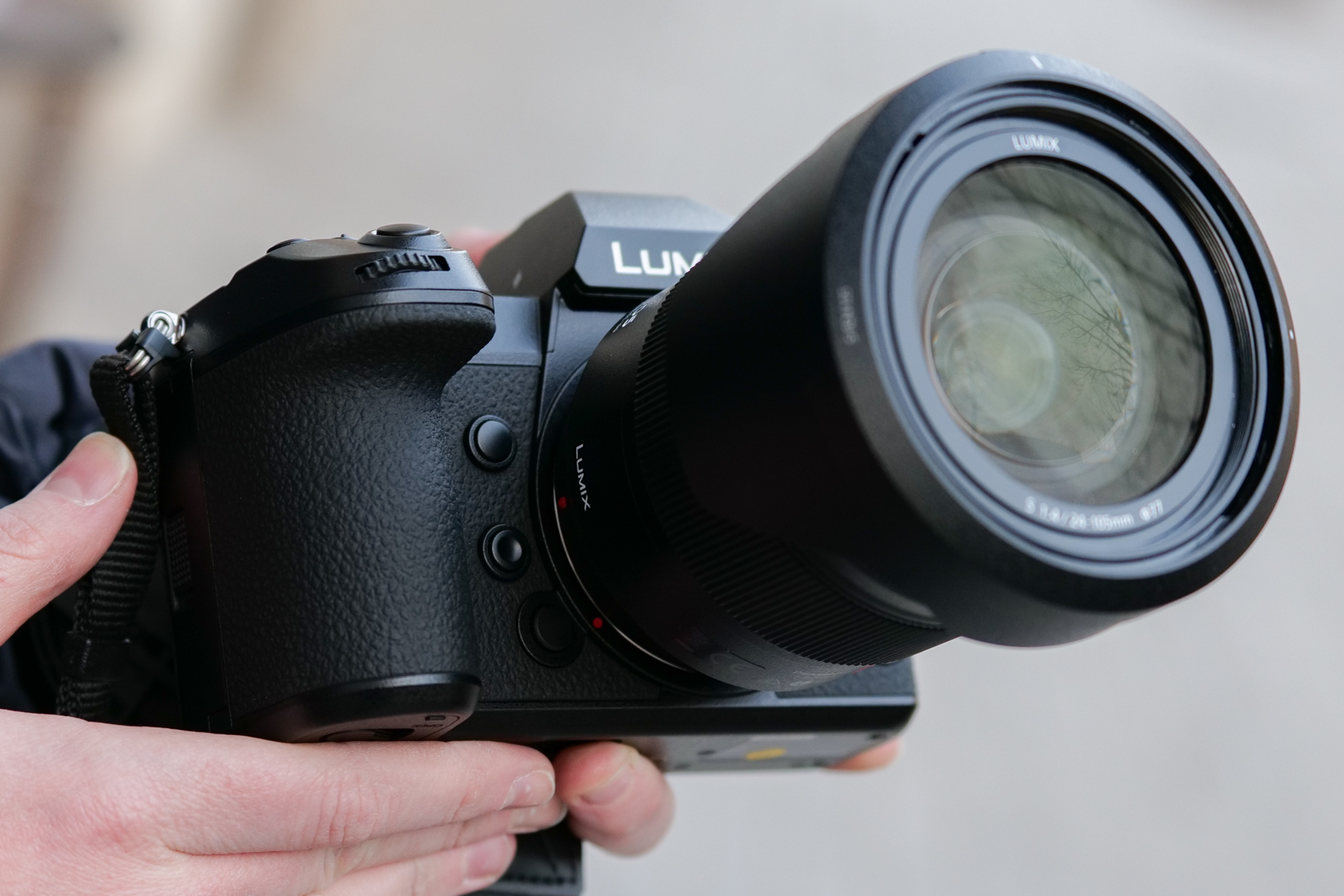
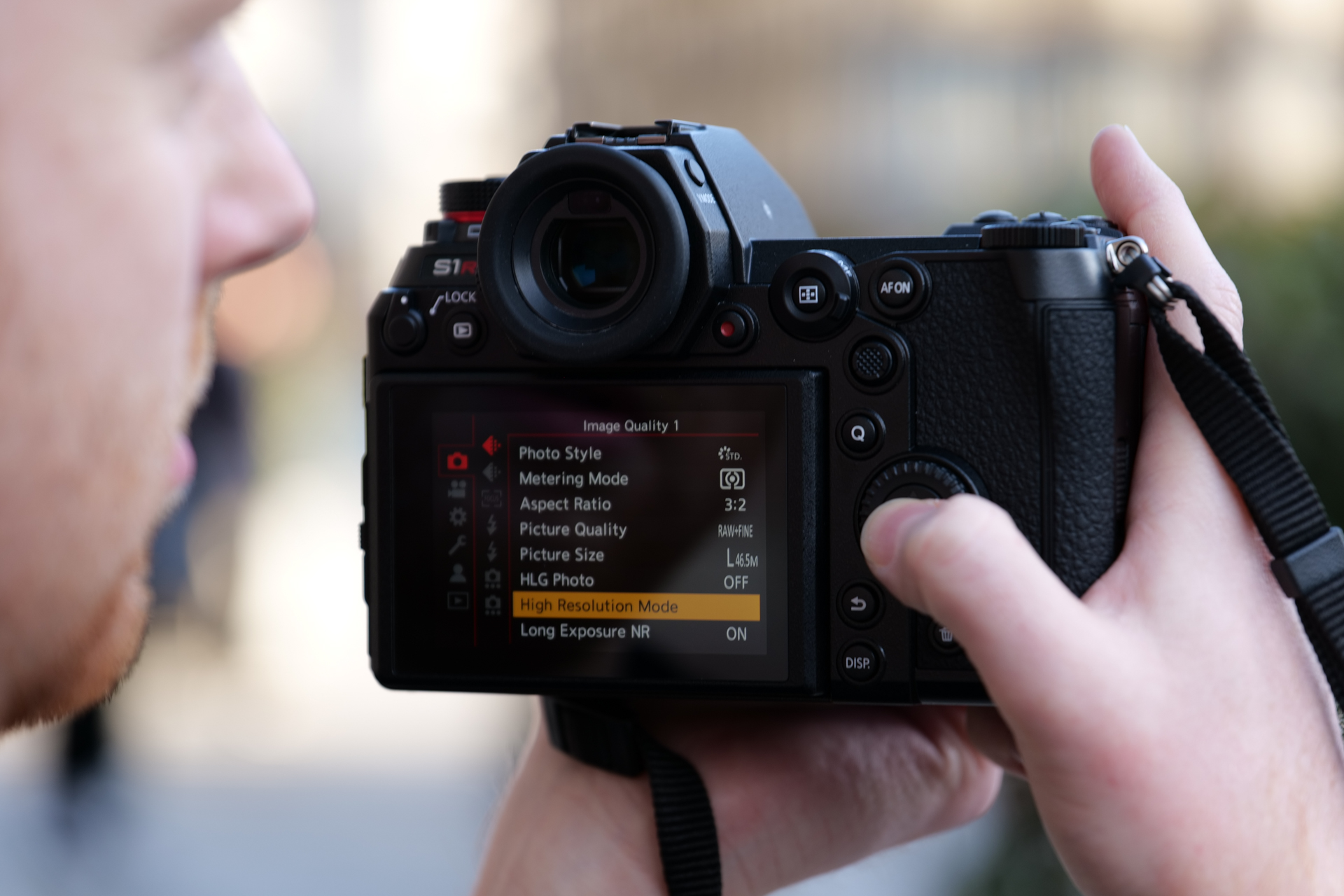
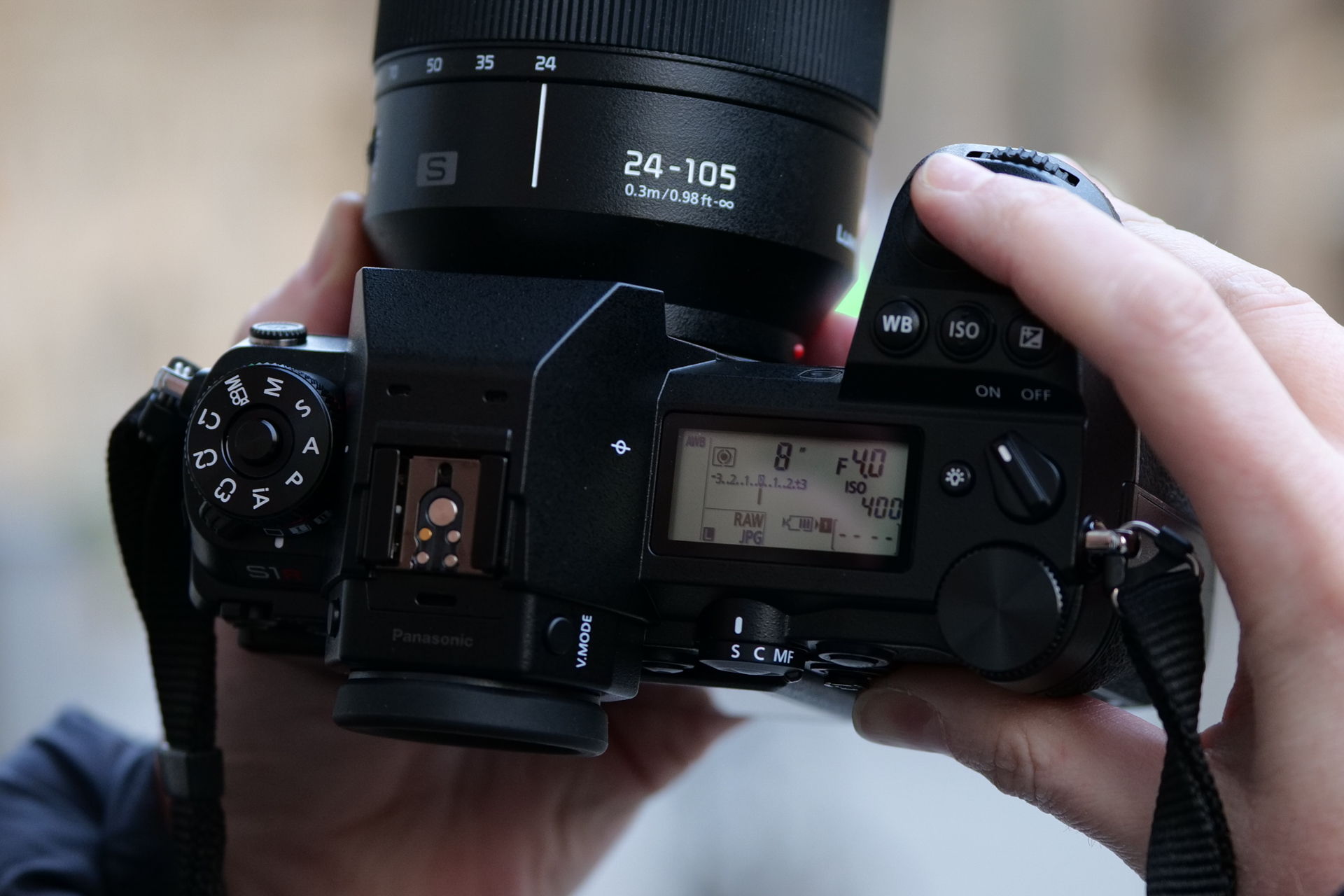

Panasonic promises that the camera can fire at 9fps without single-shot focus, and 6fps with continuous focus enabled. With the fastest XQD card we could get our hands on – namely a Sony G-series 32GB XQD card with a write speed of 400MB/s, the camera managed a burst depth for 38 frames on average when set to record raw and JPEG files at the highest quality.
This improves to around 49-50 raw and JPEG frames when you have the camera set to continuous focus (at 6fps), although you do encounter a blackout in between frames in the EVF as this happens, something that doesn't affect the single-shot 9fps option.
Both of these figures are impressive when you consider the resolution of the sensor, and they're miles ahead of what you can achieve with the very similar Nikon Z7. The fact that you can continue to operate the camera as these files are cleared to the card is yet another bonus.
Image quality
- Superb detail in images
- Kit lens performs very well
- Great video quality and good rolling shutter control
On the whole, the camera is capable of outputting excellent images and videos. A 47.3MP sensor requires good glass to get the most out of it, and the S 24-105mm f/4 Macro O.I.S. is a very capable option as an all-purpose optic – although with a four-figure asking price when bought on its own, we expect it to perform to a standard beyond that of the average kit lens.
While it's a little large, that extra reach to 105mm makes it more versatile than the typical kit lens – and the effectiveness of the image stabilization system does at least make that lack of a wider aperture slightly less of an issue. While some may have wanted a faster maximum aperture, the ability to focus 30cm away from the subject, combined with its 105mm extreme, is particularly useful when looking to separate smaller subjects from their backgrounds. Out-of-focus areas are rendered very pleasingly too, as the image below shows.
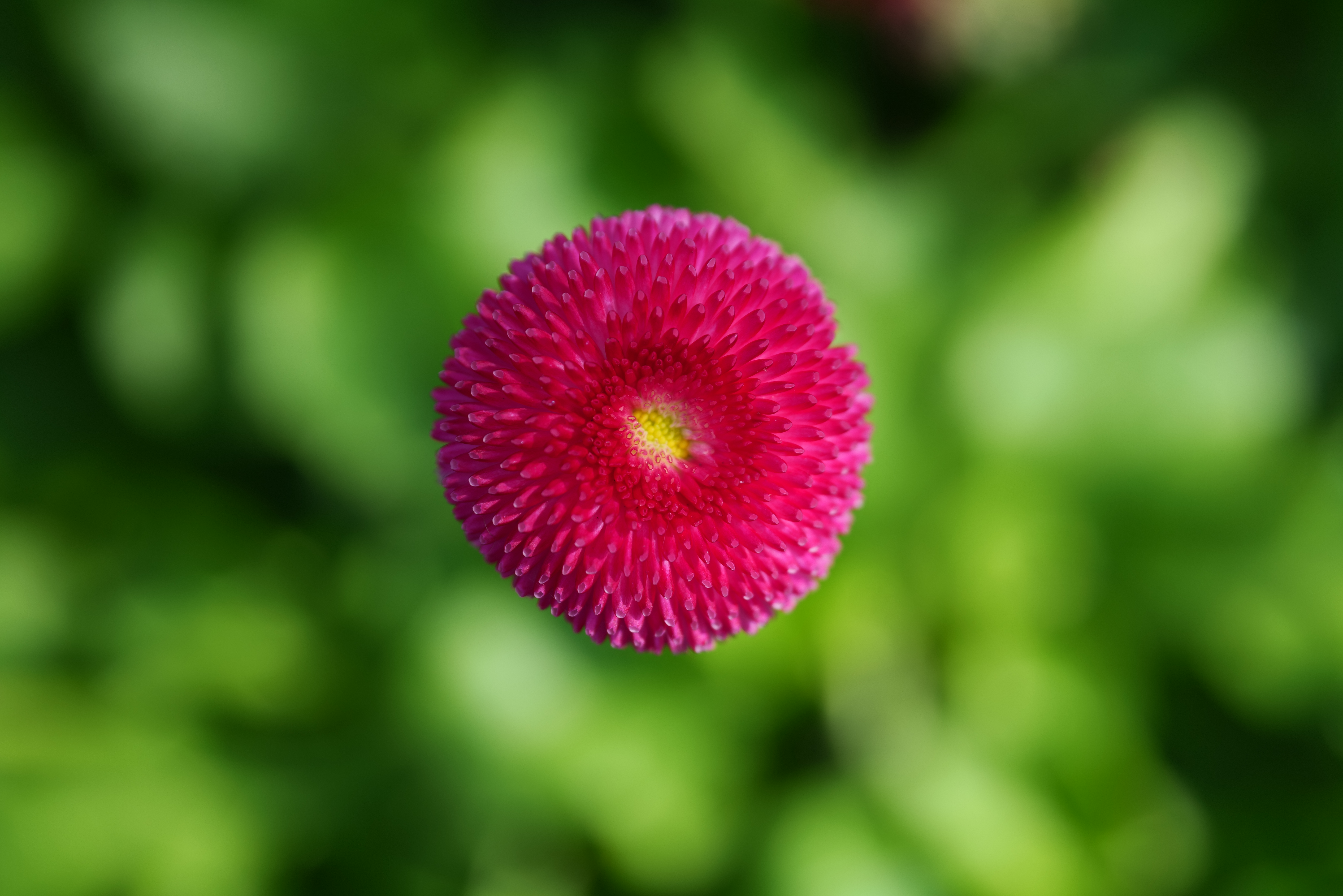
Optically, we found the lens to be a generally fine performer too. Raw files have a profile built into them that immediately irons out distortion and chromatic aberration, and this is effective if you use Photoshop or another Adobe program. Otherwise you'll typically see a moderate amount of curvilinear distortion when capturing images at wide-angle focal lengths, and also some lateral chromatic aberration towards the peripheries of the frame.
Exposures are generally spot on, although we did see the odd frame where the camera would underexpose the image a little (such as the picture of the fruit below). Exposure compensation, however, is easy to apply in-camera. Dynamic range also seems to be very good when capturing images at lower ISOs, which makes it possible to regain a great detail of shadow detail.

Click here to view the full-size image

Click here to view the full-size image

Click here to view the full-size image

Click here to view the full-size image

Click here to view the full-size image

Click here to view the full-size image

Click here to view the full-size image
Videos recorded with the S1R show an excellent level of detail.
Noise is generally well controlled too, despite the high sensor resolution. While the camera doesn't quite have the widest ISO range, images captured at ISO6400 retain very good detail, even with some gentle noise reduction applied in camera.
As we found with the S1, you have to be incredibly careful when using the High Res Shot mode as the smallest movement can compromise sharpness.
Videos shot on the S1R show an excellent level of detail, and while some minor artifacts are visible at times, these are generally kept to a minimum. Likewise, a little rolling shutter can be observed when the camera is panned, but this is generally very well controlled too.
Perhaps the only downside to capturing more casual footage concerns the autofocus system, which tends to bump a little back and forth as the camera travels to the correct focusing distance, rather than just transition smoothly. Of course, for more serious use manual focus will no doubt be used.
Current page: Performance and image quality
Prev Page Build, handling and AF Next Page Verdict and competition